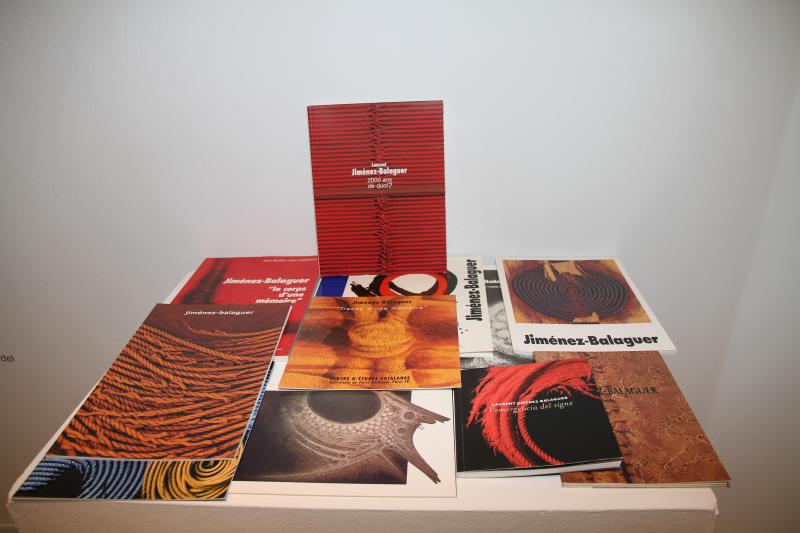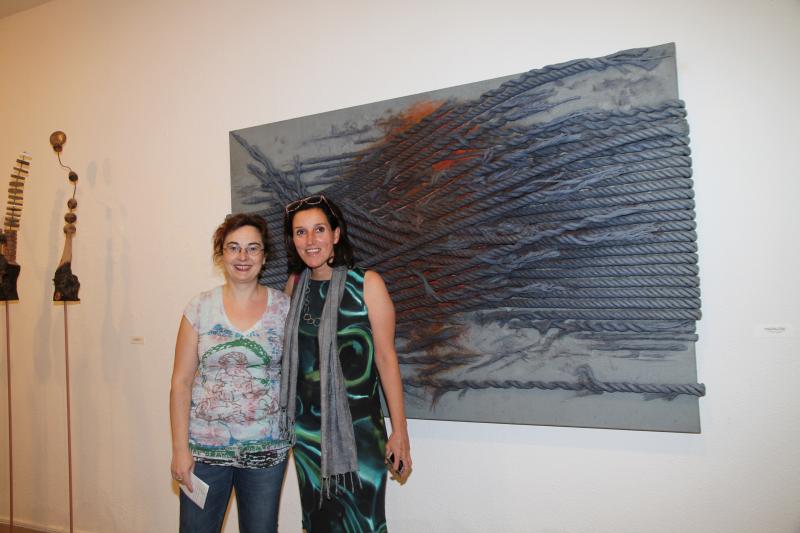Laurent Jiménez-Balaguer
Cicle Invasions subtils...
I met Guinovart at the School of Fine Arts at the Llotja in Barcelona, between 1941 and 1944. I was thirteen and he, fourteen. Four consecutive courses that were for us, almost children, the beginning of a strong friendship ... Together with Amadeo Plaza, you were the three intimate friends.
During this period, Guinovart and I went outdoors (during the weekends) to paint in the open air, in Monistrol (Montserrat). In 1946, we joined the drawing courses of the FAD (Promotion of Decorative Arts). Later, at the Cercle Maillol of the French Institute of Barcelona. In 1952, Guinovart earned a scholarship and marched to Paris. Together with Víctor M. d'Imbert, we met several times, especially on the occasion of the III Hispano-American Art Biennale (1953). Our last meeting was in Paris, at the Lina Davidov Gallery, on the occasion of an exhibition of her staff. I am very familiar with the artistic career of Guinovart. Our dialogue ...? Personally difficult For me, Guinovart has always been represented and has been rooted in his land. I have loved and always fought for international art. But his character and mine corresponded to a desire for victory ... we knew what we wanted and we always wanted to achieve it. Today, in this spiritual encounter, a very strong hug in Guinovart, a passionate man ... and a clear admiration for his work, of a vital plastic force.
Laurent Jiménez-Balaguer (Boulogne-Billancourt, September 23, 2012)
In this exhibition, in the "Subtle Invasions" series, we wanted to invite the artist, Laurent Jiménez-Balaguer (L'Hospitalet de Llobregat, 1928) to the Espai Guinovart d'Agramunt, so that a small tasting of their pieces, Three works that come from the L'Hospitalet Museum, discusses with a selection of pieces by Josep Guinovart's "Look Project" (1996), an authentic subtle plastic and poetic invasion of both creative worlds. Friends and colleagues from the decade of the 40's, Jiménez-Balaguer and Guinovart began in a schematic and ingenuous figuration that shuns the obsolete stereotypes of postwar art. Visqueren together the study time at La Lonja, the courses and activities of the FAD, the meetings of the Cercle Maillol of the French Institute of Barcelona. They participated in exhibitions such as the Halls of October and the III Hispano-American Art Biennale. In the decade of the fifties, they discovered the cry of freedom implied by informalism, although their temperaments led them to travel through different aesthetic walks. Then, the distance, Barcelona and Paris, came from the roots in the territory and the historical moment that was lived in Spain versus the search for a universal syllogical language centered on memory and body. Years later, however, there remains the testimony of two unquestionable artistic trajectories, of two artistic temperaments that have left the subject to overcome it, which have created their own language to speak a new language, which have started from the real to build a work that seeks into the mystery.
It is not accidental, then, that in the work of Jiménez-Balaguer we can find some elements that we also observe in works of Guinovart: oval, swirls and spirals, broken crosses, torn squares or the form of infinity. The three works that we present at the Petit Espai d'Agramunt respond to two different chronological moments in the career of Jiménez-Balaguer: in Sans titre (1956), the painter consolidates the articulation of an abstract and bold abstract language, including Tharrats He emphasized the will to «lift the curtain of nature, for his eagerness to discover a mystery that gravitates in the universal»; The other two pieces, Le temps qui fuit (2001) and L'Espagne en molt (2002), despite the temporal and aesthetic distance, respond to the same desire to grasp the inaprensible, to turn mystery into, to tie or cover the space to make it visible. As Albert Mercadé defines: "A totemic effort to control and purify the chaos that causes his work to end up concreting in symbologies that tend to concrete forms, although not conceptual, say Euclidean, but rather of natural geometry, almost cosmic ».
In both creators, Guinovart and Jiménez-Balaguer, there is a metaphysical transcendence that gives them the creation of plastic enigmas of a demoralizing force that allows to glimpse, from a specific point of departure (matter, space, time ...) elements that defuse and transcend all precision.
Sílvia Muñoz de Imbert
Historian and art critic



